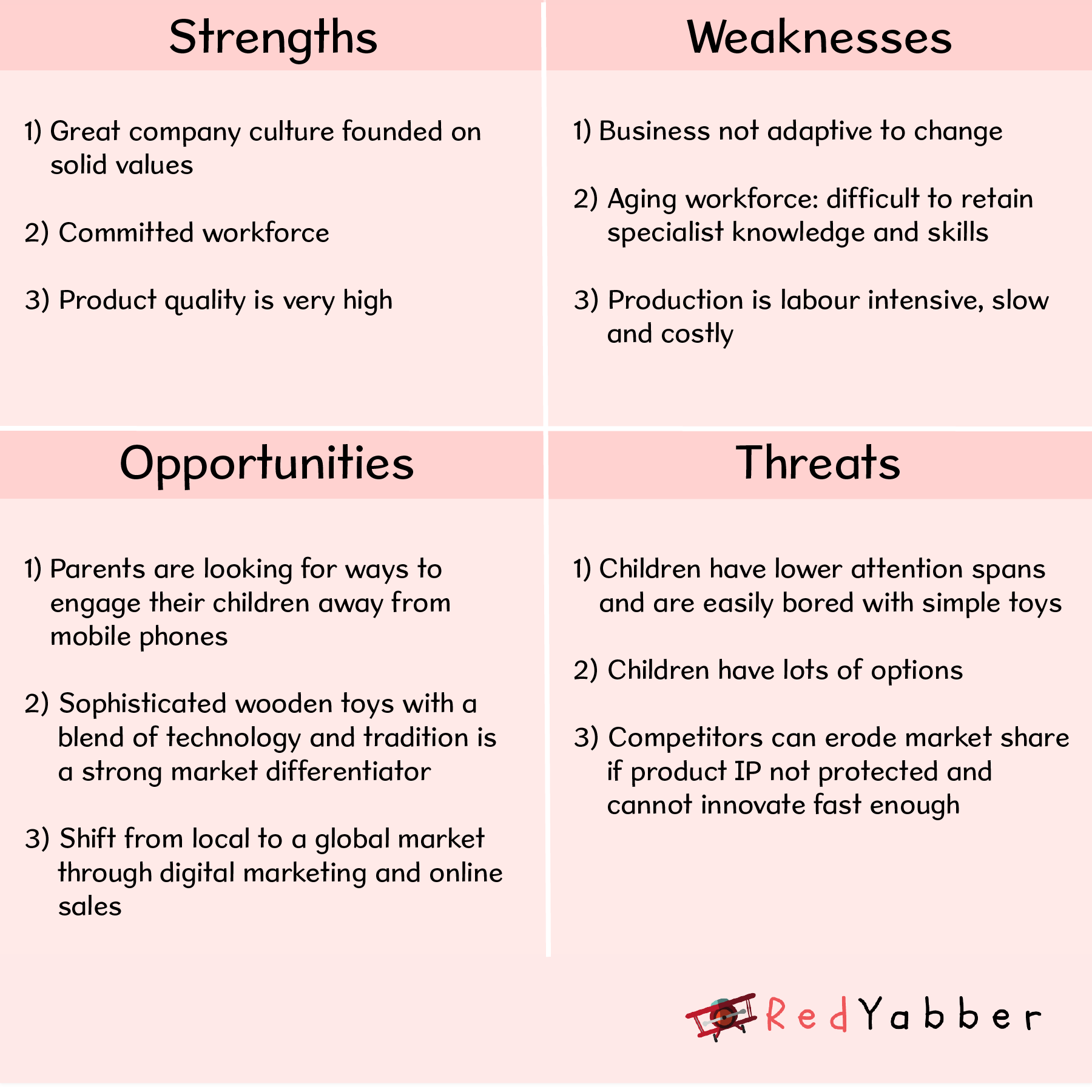


While on the other hand, "threats" are realities in the greater environment, which might lead to problems for the entity. Regarding externally-related, "opportunities" are realities in the greater environment that can be exploited to benefit the entity. The latter being characteristic of that same entity, which leads to a relative disadvantage against the competition.

The former representing a facet of an organization/entity which lends it an advantage over the competition. "Strengths" and "weaknesses" are internally-related. There are both internal and external considerations build into the tool. Beyond the business world, SWOT Analysis can also be applied to the individual-level to assess a person's situation versus their competition further. Also known as the SWOT Matrix, it has achieved recognition as useful in differentiating and establishing a niche within the broader market. There is no universally-accepted creator. The strategy is historically credited to Albert Humphrey in the 1960s, but this attribution remains debatable. SWOT Analysis (short for strengths, weaknesses, opportunities, threats) is a business strategy tool to assess how an organization compares to its competition.


 0 kommentar(er)
0 kommentar(er)
